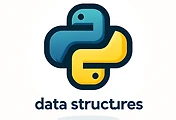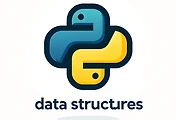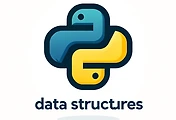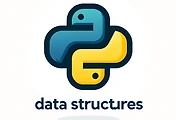반응형
Day 1: 우선순위 큐의 기본 개념
- 강의 내용:
- 우선순위 큐의 정의와 특징
- 우선순위 큐의 개념과 용도
- 우선순위 큐와 일반 큐의 차이점
- 우선순위 큐의 주요 연산
- insert, delete_min (또는 delete_max)
- 우선순위 큐의 정의와 특징
- 실습:
- 기본 우선순위 큐 구현 예제
# 리스트를 사용한 간단한 우선순위 큐 구현
class PriorityQueue:
def __init__(self):
self.queue = []
def insert(self, item):
self.queue.append(item)
self.queue.sort() # 오름차순 정렬 (최소 우선순위 큐)
def delete_min(self):
if not self.is_empty():
return self.queue.pop(0)
return None
def is_empty(self):
return len(self.queue) == 0
def display(self):
print(self.queue)
# 우선순위 큐 사용 예제
pq = PriorityQueue()
pq.insert(3)
pq.insert(1)
pq.insert(2)
pq.display() # [1, 2, 3]
print("Delete min:", pq.delete_min()) # Delete min: 1
pq.display() # [2, 3]
Day 2: 힙의 기본 개념
- 강의 내용:
- 힙의 정의와 특징
- 힙의 개념과 용도
- 완전 이진 트리 구조
- 최대 힙과 최소 힙
- 최대 힙과 최소 힙의 차이점
- 힙의 정의와 특징
- 실습:
- 최대 힙과 최소 힙의 개념 설명
# 힙의 개념 설명
# 최대 힙: 부모 노드가 자식 노드보다 크거나 같음
# 최소 힙: 부모 노드가 자식 노드보다 작거나 같음
# 힙의 사용 예: 힙 정렬, 우선순위 큐
# 파이썬에서 heapq 모듈을 사용하여 최소 힙 구현
import heapq
min_heap = []
heapq.heappush(min_heap, 3)
heapq.heappush(min_heap, 1)
heapq.heappush(min_heap, 2)
print("Min heap:", min_heap) # [1, 3, 2]
print("Delete min:", heapq.heappop(min_heap)) # 1
print("Min heap after pop:", min_heap) # [2, 3]
Day 3: 힙의 삽입과 삭제 연산
- 강의 내용:
- 힙의 삽입 연산
- 삽입 시 힙의 구조 유지
- 힙의 삭제 연산
- 삭제 시 힙의 구조 유지
- 힙의 삽입 연산
- 실습:
- 힙의 삽입과 삭제 연산 구현
# 최대 힙을 직접 구현하는 예제
class MaxHeap:
def __init__(self):
self.heap = []
def insert(self, item):
self.heap.append(item)
self._heapify_up(len(self.heap) - 1)
def delete_max(self):
if len(self.heap) > 1:
self._swap(0, len(self.heap) - 1)
max_item = self.heap.pop()
self._heapify_down(0)
elif self.heap:
max_item = self.heap.pop()
else:
max_item = None
return max_item
def _heapify_up(self, index):
parent_index = (index - 1) // 2
if index > 0 and self.heap[index] > self.heap[parent_index]:
self._swap(index, parent_index)
self._heapify_up(parent_index)
def _heapify_down(self, index):
child_index = 2 * index + 1
if child_index < len(self.heap):
right_child_index = child_index + 1
if right_child_index < len(self.heap) and self.heap[right_child_index] > self.heap[child_index]:
child_index = right_child_index
if self.heap[index] < self.heap[child_index]:
self._swap(index, child_index)
self._heapify_down(child_index)
def _swap(self, i, j):
self.heap[i], self.heap[j] = self.heap[j], self.heap[i]
def display(self):
print(self.heap)
# 최대 힙 사용 예제
max_heap = MaxHeap()
max_heap.insert(3)
max_heap.insert(1)
max_heap.insert(2)
max_heap.display() # [3, 1, 2]
print("Delete max:", max_heap.delete_max()) # 3
max_heap.display() # [2, 1]
Day 4: 힙 정렬
- 강의 내용:
- 힙 정렬의 개념과 원리
- 힙 정렬의 과정
- 힙 정렬의 시간 복잡도
- 힙 정렬 알고리즘 구현
- 힙 정렬의 개념과 원리
- 실습:
- 힙 정렬 구현 예제
# 힙 정렬 알고리즘 구현
def heapify(arr, n, i):
largest = i
left = 2 * i + 1
right = 2 * i + 2
if left < n and arr[largest] < arr[left]:
largest = left
if right < n and arr[largest] < arr[right]:
largest = right
if largest != i:
arr[i], arr[largest] = arr[largest], arr[i]
heapify(arr, n, largest)
def heap_sort(arr):
n = len(arr)
for i in range(n // 2 - 1, -1, -1):
heapify(arr, n, i)
for i in range(n - 1, 0, -1):
arr[i], arr[0] = arr[0], arr[i]
heapify(arr, i, 0)
# 힙 정렬 사용 예제
arr = [4, 10, 3, 5, 1]
heap_sort(arr)
print("Sorted array:", arr) # [1, 3, 4, 5, 10]
Day 5: 파이썬의 heapq 모듈
- 강의 내용:
- heapq 모듈 소개
- heapq 모듈의 기능과 사용법
- heapq 모듈을 사용한 우선순위 큐 구현
- heapq 모듈 소개
- 실습:
- heapq 모듈을 사용하여 우선순위 큐 구현 예제 작성
import heapq
# heapq 모듈을 사용한 우선순위 큐 구현
class PriorityQueue:
def __init__(self):
self.heap = []
def insert(self, item):
heapq.heappush(self.heap, item)
def delete_min(self):
return heapq.heappop(self.heap) if self.heap else None
def is_empty(self):
return len(self.heap) == 0
def display(self):
print(self.heap)
# 우선순위 큐 사용 예제
pq = PriorityQueue()
pq.insert(3)
pq.insert(1)
pq.insert(2)
pq.display() # [1, 3, 2]
print("Delete min:", pq.delete_min()) # Delete min: 1
pq.display() # [2, 3]
Day 6: 우선순위 큐와 힙의 응용
- 강의 내용:
- 우선순위 큐와 힙의 응용 사례
- 작업 스케줄링
- 다익스트라 알고리즘
- 우선순위 큐와 힙을 사용한 알고리즘
- 우선순위 큐와 힙의 응용 사례
- 실습:
- 다익스트라 알고리즘 구현
import heapq
# 그래프를 표현하는 클래스
class Graph:
def __init__(self):
self.edges = {}
def add_edge(self, from_node, to_node, weight):
if from_node not in self.edges:
self.edges[from_node] = []
self.edges[from_node].append((to_node, weight))
def dijkstra(self, start):
pq = []
heapq.heappush(pq, (0, start))
distances = {start: 0}
while pq:
current_distance, current_node = heapq.heappop(pq)
if current_distance > distances.get(current_node, float('inf')):
continue
for neighbor, weight in self.edges.get(current_node, []):
distance = current_distance + weight
if distance < distances.get(neighbor, float('inf')):
distances[neighbor] = distance
heapq.heappush(pq, (distance, neighbor))
return distances
# 다익스트라 알고리즘 사용 예제
g = Graph()
g.add_edge('A', 'B', 1)
g.add_edge('A', 'C', 4)
g.add_edge('B', 'C', 2)
g.add_edge('B', 'D', 5)
g.add_edge('C', 'D', 1)
distances = g.dijkstra('A')
print("Distances:", distances) # {'A': 0, 'B': 1, 'C': 3, 'D': 4}
Day 7: 종합 연습 및 프로젝트
- 강의 내용:
- 우선순위 큐와 힙을 사용한 종합 연습 문제 풀이
- 다양한 우선순위 큐와 힙 관련 문제
- Q&A 세션
- 미니 프로젝트
- 우선순위 큐와 힙을 활용한 간단한 프로그램 구현
- 예: 작업 스케줄링 시스템
- 우선순위 큐와 힙을 사용한 종합 연습 문제 풀이
- 실습:
- 종합 연습 문제 풀기
- 미니 프로젝트 작성 및 발표
# 연습 문제 1: 힙을 사용한 K번째 최소값 찾기
def find_kth_smallest(arr, k):
heapq.heapify(arr)
for _ in range(k - 1):
heapq.heappop(arr)
return heapq.heappop(arr)
arr = [7, 10, 4, 3, 20, 15]
k = 3
print(f"{k}번째 최소값:", find_kth_smallest(arr, k)) # 7
# 미니 프로젝트 예제: 작업 스케줄링 시스템
class Task:
def __init__(self, name, priority):
self.name = name
self.priority = priority
def __lt__(self, other):
return self.priority < other.priority
class TaskScheduler:
def __init__(self):
self.pq = []
def add_task(self, task):
heapq.heappush(self.pq, task)
def schedule(self):
while self.pq:
task = heapq.heappop(self.pq)
print(f"Scheduling task: {task.name} with priority {task.priority}")
# 작업 스케줄링 시스템 사용 예제
scheduler = TaskScheduler()
scheduler.add_task(Task("Task 1", 3))
scheduler.add_task(Task("Task 2", 1))
scheduler.add_task(Task("Task 3", 2))
scheduler.schedule()
# Output:
# Scheduling task: Task 2 with priority 1
# Scheduling task: Task 3 with priority 2
# Scheduling task: Task 1 with priority 3
이 강의는 파이썬의 자료구조 중 우선순위 큐와 힙을 익히는 것을 목표로 하며, 각 강의는 이론과 실습을 포함합니다. 다음 주차에 대한 상세 강의를 원하시면 말씀해 주세요!
반응형
'-----ETC2----- > 자료구조' 카테고리의 다른 글
| [자료구조] Week 6: 트리 I - 트리의 개념과 이진 트리 (0) | 2024.06.01 |
|---|---|
| [자료구조] Week 5: 해시 테이블 (0) | 2024.06.01 |
| [자료구조] Week 3: 스택과 큐 (0) | 2024.06.01 |
| [자료구조] Week 2: 연결 리스트 (0) | 2024.06.01 |
| [자료구조] Week 1: 자료구조 개요 및 배열 (0) | 2024.06.01 |



